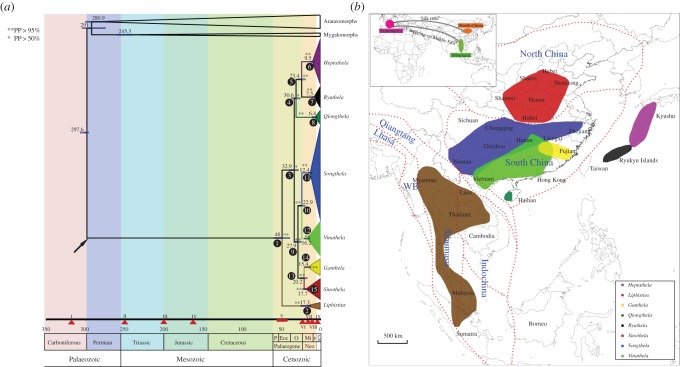Figure 3.
Divergence time estimates and geographical distribution of liphistiid genera. (a) Chronogram from BEAST with inferred node ages in million years and 95% confidence intervals (bars), estimated using fossil calibrations and informed priors on the mtDNA substitution rates. The arrow indicates the fossil age of Palaeothele montceauensis but does not imply direct ancestry. Black numbered circles represent the major nodes matching those in electronic supplementary material, figure S2. Triangles with Roman numbers mark relevant geological events that may have affected the dispersal routes and diversification of mesothelid and liphistiid lineages. I, Pangea started to form; II, Pangea started to break-up and Sibumasu terrane contacted with Eurasia; III, Sibumasu terrane accreted to the Indochina, South China and North China plates; IV, North China plate connected to Eurasia; V, India collided with Eurasia; VI, the Yangtze River formed; VII, Japanese islands separated from East Asia; VIII, Taiwan formed; IX, Hainan Island separated from the mainland. (b) General distribution maps of the eight genera delimited in this study, and the demarcation of main continental plates and terranes that formed Southeast and East Asia (in part from [52]). Inset map shows the two most plausible of the three mutually exclusive hypotheses explaining the eastward dispersal routes of liphistiid ancestors (simplified on today's land masses, but see text for details). WB, West Burma. (Online version in colour.)

